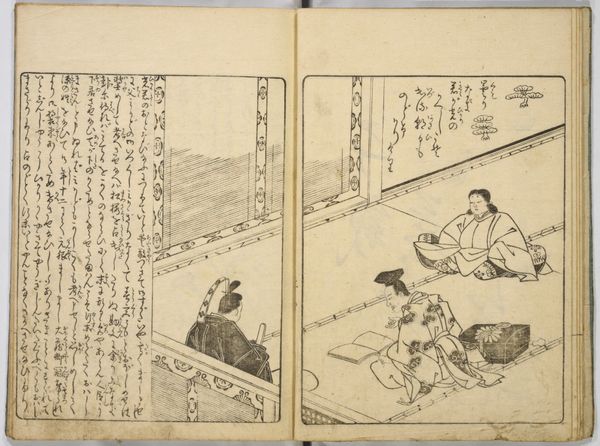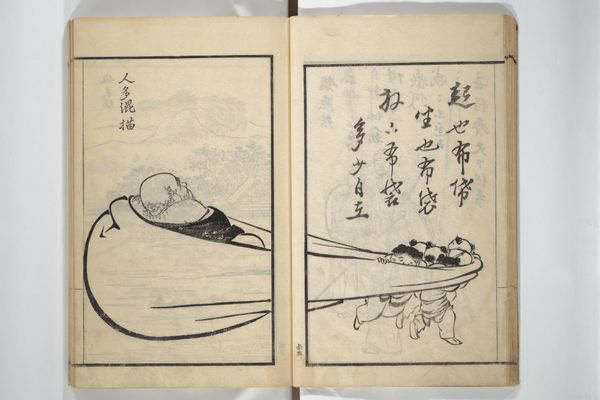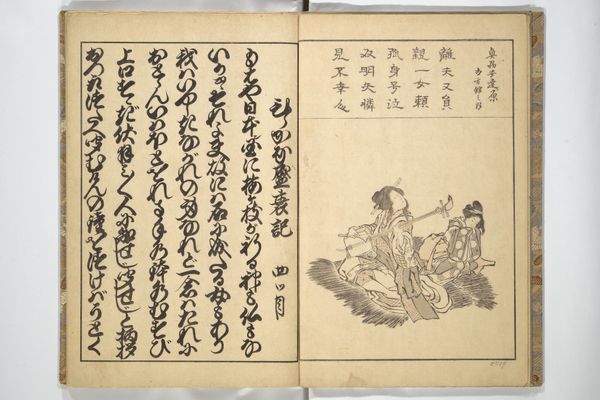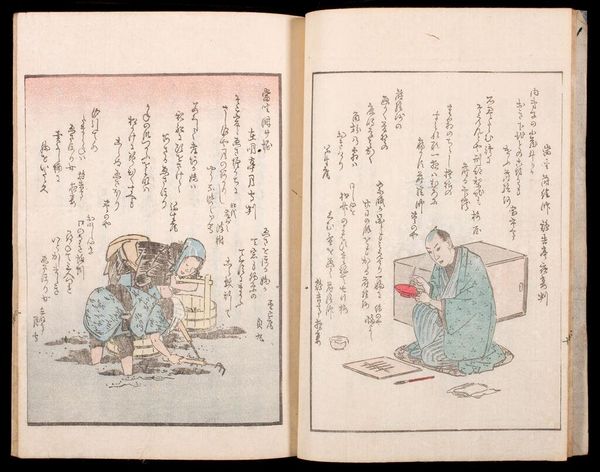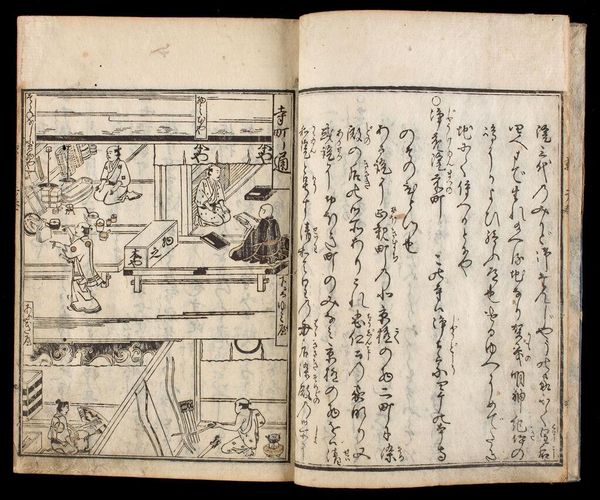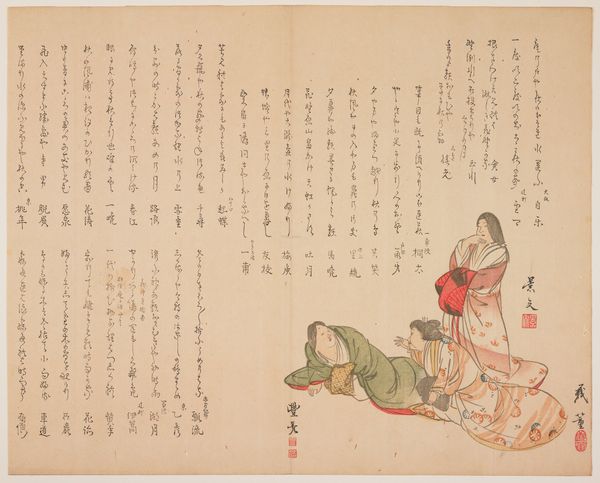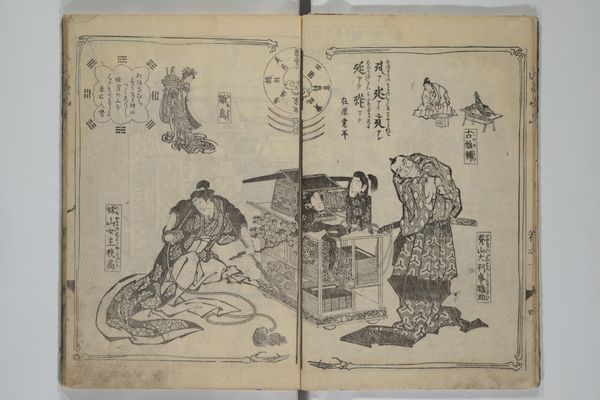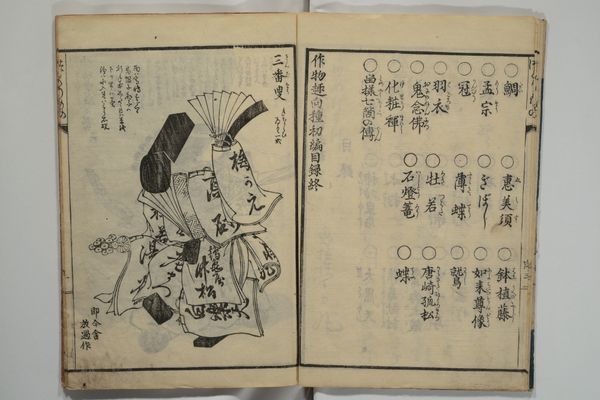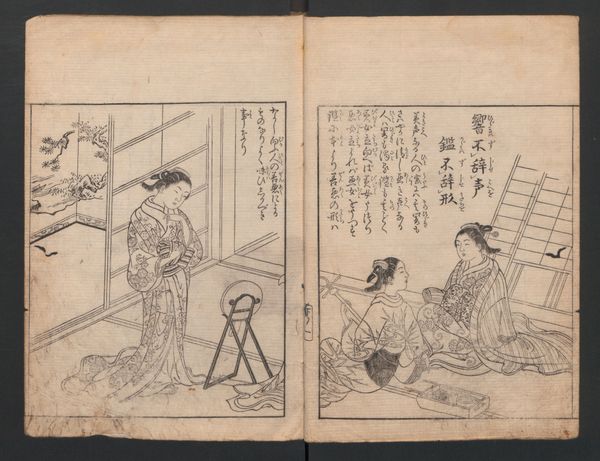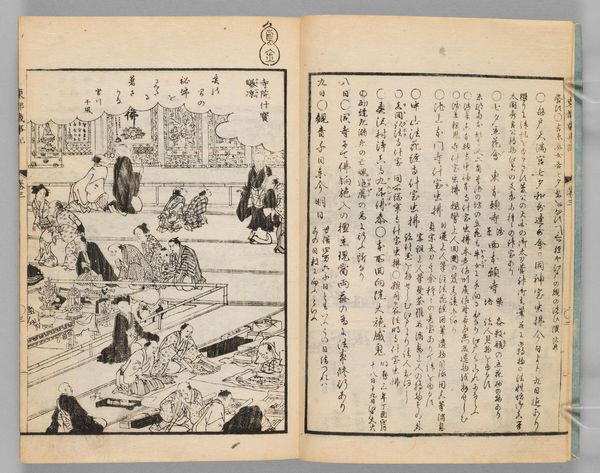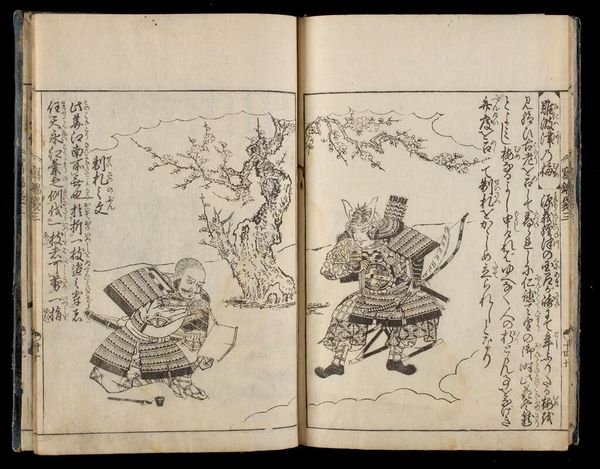
drawing, print, paper, ink
#
drawing
#
narrative-art
# print
#
asian-art
#
ukiyo-e
#
paper
#
ink
Dimensions: 9 x 6 1/4 x 5/16 in. (22.9 x 15.8 x 0.8 cm)
Copyright: Public Domain
Curator: Here we have "Pictures of Various Jobs and Scenes II," a print by Katsushika Taito II from 1847. It's rendered in ink on paper. Editor: It feels almost like a documentary snapshot. You immediately get a sense of labor and intense concentration just looking at these figures. It strikes me as fairly small, but full of meticulous detail. Curator: Yes, this work is part of the ukiyo-e tradition. These prints often capture scenes from everyday life and popular culture, providing insight into the social hierarchies and roles within the society. You have figures meticulously working and what seem to be tradesmen engaged in their specific skills. Editor: I find myself wondering about the relationship between the professions shown here and the artist themselves. The depiction seems very intimate. What processes of production were used to create this particular image? What does it tell us about access to craftsmanship or manual labor in Japan at this time? Curator: We can use this work as a lens to examine broader societal questions of its time. The depiction of workers raises questions about their status, their roles, and even how their identities were constructed. Consider gender dynamics too – what might be implied by the representation of only male figures in these labor settings? Editor: Exactly. Focusing on the labor itself-- the creation of things! It pushes against the conventional "high art" categories and encourages a discussion about how material conditions shape creative practices, like woodblock printing here. It is such a rich view of both the artistic process and those other essential trades which enabled that. Curator: The work's historical significance can provoke reflection on identity, labor rights, and the politics of representation even today. Editor: Absolutely, this print isn’t just a depiction of labor; it embodies a specific set of circumstances around how objects are created, distributed, and consumed within society. Thanks to those that preceded us in those trades! Curator: It's truly powerful to see how one image from centuries ago can still inspire such relevant and necessary questions.
Comments
No comments
Be the first to comment and join the conversation on the ultimate creative platform.
